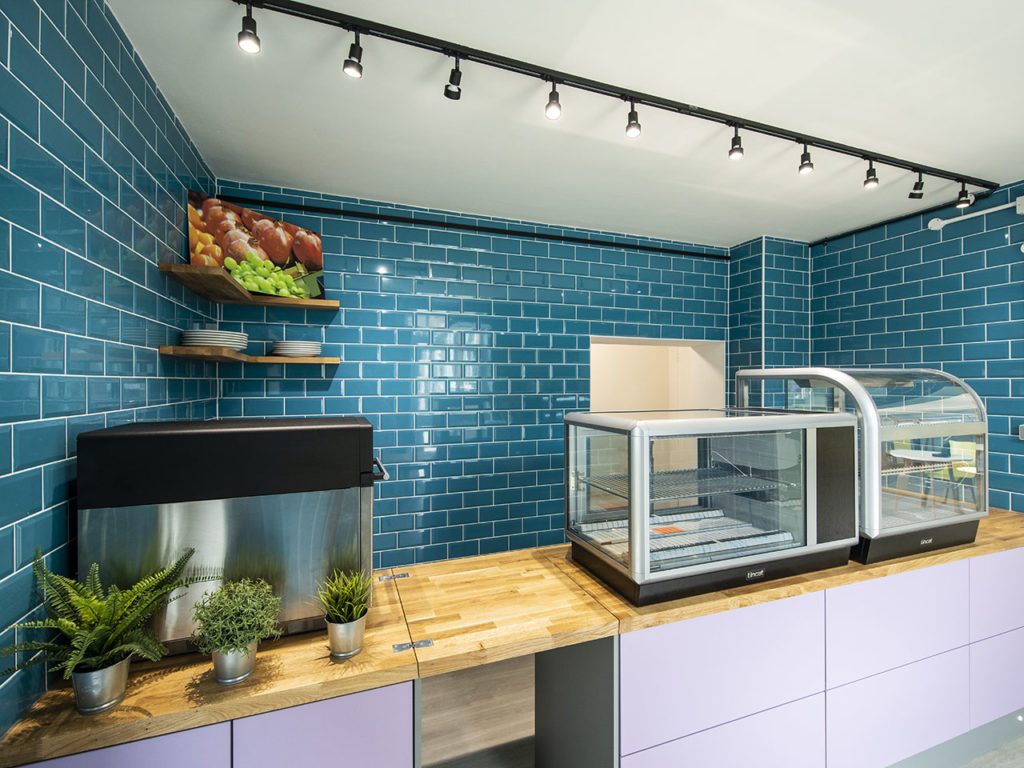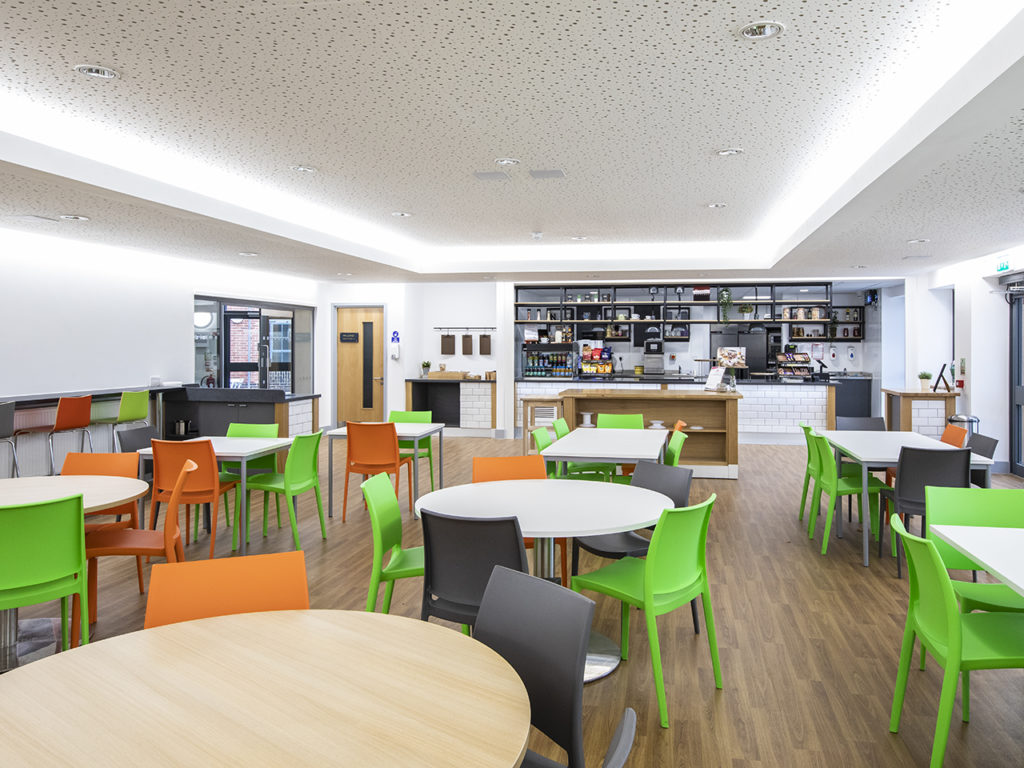Giving students easy access to food service is a crucial part of dining hall design. Consider traffic flow within your space, and pay particular attention to entrance and exit routes.
There are many different service station options. You will need to decide whether you are going to implement mobile serving stations that can be relocated depending upon the event or requirements, or fixed serving stations.

Many schools choose to situate fixed service stations close to the kitchen areas, for easy access to the food, and less staffing requirements. However, with careful planning and organisation, it may be more beneficial to implement a number of mobile units. For example, you could separate vegetarian meals from the other meal choices. Or simply have multiple serving stations with the same options on each one. These can then be located in different areas of the dining hall to ease congestion.

Managing the flow of students through your dining space needs careful consideration. You may need to experiment with, and monitor, various different layouts.
Make sure routes and food options are clearly sign-posted so all students know where they are going. Avoid bottle necks at pay stations, and ensure there are clear lines of vision to display and menu boards.



